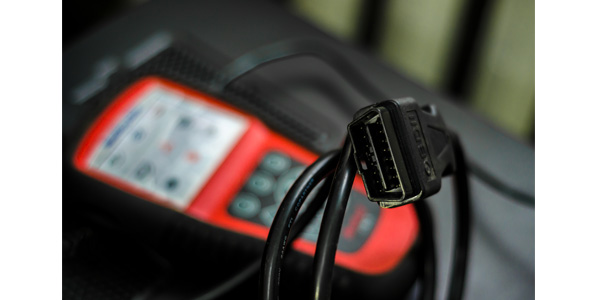
Before the advent of onboard diagnostic systems, most driveability issues could be solved with a screwdriver and a pair of pliers. Not so anymore. The number of electronically controlled sensors and systems on vehicles today is increasing, and therefore requires much more sophisticated tools to communicate with the computers onboard.
Code Readers
While most professional technicians have more full-featured scan tools at their disposal, many techs also keep a simple code reader in their toolbox for quick reference or to take with them on a call. Counter pros find that a basic code reader is a good tool for helping customers diagnose their DTCs and to figure out what action to take next. These are simple but effective tools, and some even display live data streams from OBD II monitors. However, these scan tools may not delve into vehicle-specific codes, so for the big diagnostic jobs, most pros use a tool that reads multiple networks.
Wireless Connectors
Basic code readers are now available with wireless dongles and a free app that reads the codes. These connect to the vehicle’s DLC port and send data via Wi-Fi or Bluetooth to a smartphone or tablet device. The advantage of these tools is that you can move around to the front of the vehicle and perform inspections while reading or testing a particular code or monitor. Wireless dongles can connect to more sophisticated scan tools as well, offering a professional technician more flexibility in how they collect and analyze the data. Some wireless scanners tie into the shop’s Wi-Fi network and can live-stream data to another location.
OBD II and CAN
On the high-end of the scan-tool spectrum are the devices that combine several functions into one tool. These typically include the scan tool that reads the DLC and a scope that will read and map voltages and electrical current to give the technician a better understanding of the issue. These scan tools are not cheap and are primarily for the professional technician working on multiple vehicles from a variety of manufacturers. Scan-tool makers now offer large tablets with touchscreen capabilities that will read vehicle-specific modules and create a waveform graph so you can compare the data overlays.
Multifunction scan tools come with connectors for plugging into the standard DLC port, and they can be backward-compatible with OBD I connectors. If the scan tool is a Wi-Fi-enabled tablet, it can look up VIN codes automatically, identify the vehicle’s exact specs and print out a PDF of the diagnostic session for the customer.
Multifunction scan tools also can read the controller area network (CAN) bus module for transmission controllers, airbag faults and ABS codes. Other special functions include an oil reset and EPB (electronic parking brake), SAS (steering angle sensor), BMS (battery management system) and DPF (diesel particulate filter) condition. A $40 scan tool will not read all of these modules and typically only reads the OBD II generic codes. Some multifunction scanners go even further and come with a TPMS antenna to reset the sensor after a tire rotation or sensor replacement.
ABS Scanners
There are fewer stand-alone ABS scanners on the market because the trend today is to add the ABS and CAN module to a multifunction scan tool that connects to the DLC port for OBD II. However, some shops utilize ABS-specific scanners if they predominantly perform brake work. These can read the wheel-speed sensors and erase codes after installing a replacement sensor.
TPMS Scan Tool
Not to be confused with an OBD scan tool, a TPMS scan tool is used for resetting TPMS sensors. Any time service is performed, a TPMS sensor must go through a relearn procedure – a set of instructions that must be followed to enable the sensor to communicate with the ECU. For example, if a TPMS sensor is replaced, the TPMS needs to be reset with a TPMS scan tool. These scan tools operate with an antenna to recode the sensors and calibrate them with the ECU. Some TPMS scan tools include an auto-relearn function as well as a manual mode.







